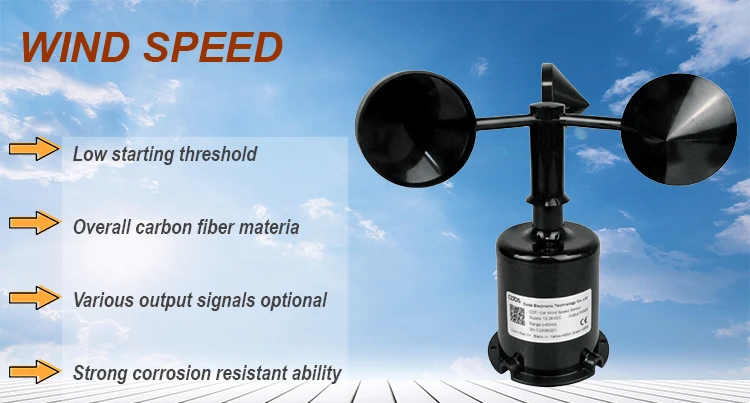
html
Wind Speed Measuring Instruments: Types and Applications
Measuring wind speed is essential in various fields, including meteorology, aviation, and environmental studies. Accurate wind speed data helps in weather forecasting, flight safety, and renewable energy projects. This article explores different types of wind speed measuring instruments and their applications.
1. Anemometers
Anemometers are the most common instruments used to measure wind speed. They come in several types, each suited for specific applications.
Cup Anemometers
Cup anemometers consist of three or four cups mounted on horizontal arms. As the wind blows, the cups rotate, and the speed is calculated based on the rotation rate. These are widely used in weather stations and for wind energy assessments.
Vane Anemometers
Vane anemometers, also known as propeller anemometers, use a rotating propeller to measure wind speed. They are often used in HVAC systems and industrial applications where directional wind measurement is required.
Hot-Wire Anemometers
Hot-wire anemometers measure wind speed by detecting changes in the electrical resistance of a heated wire exposed to the wind. These are highly sensitive and used in laboratory settings and for turbulence studies.
2. Sonic Anemometers
Sonic anemometers use ultrasonic sound waves to measure wind speed and direction. They are highly accurate and do not have moving parts, making them ideal for research and meteorological applications.
3. Wind Vanes
Wind vanes measure wind direction but are often paired with anemometers to provide comprehensive wind data. They are commonly used in weather stations and for aviation purposes.
4. Pitot Tubes
Pitot tubes measure wind speed by comparing static and dynamic air pressure. They are primarily used in aviation to determine aircraft speed relative to the wind.
Applications of Wind Speed Measuring Instruments
Meteorology
Accurate wind speed measurements are crucial for weather forecasting and climate studies. Instruments like anemometers and sonic anemometers provide real-time data for predicting storms and other weather events.
Aviation
Wind speed and direction data are vital for flight safety. Pilots rely on instruments like pitot tubes and wind vanes to navigate safely and efficiently.
Renewable Energy
Wind turbines require precise wind speed measurements to optimize energy production. Cup and sonic anemometers are commonly used in wind farms to assess wind resources.
Environmental Monitoring
Wind speed instruments help monitor air quality and pollutant dispersion. They are used in urban planning and industrial compliance to ensure safe environmental conditions.
In conclusion, wind speed measuring instruments play a critical role in various industries. From simple cup anemometers to advanced sonic devices, these tools provide the data needed for safety, efficiency, and environmental protection.
Keyword: measure wind speed instrument